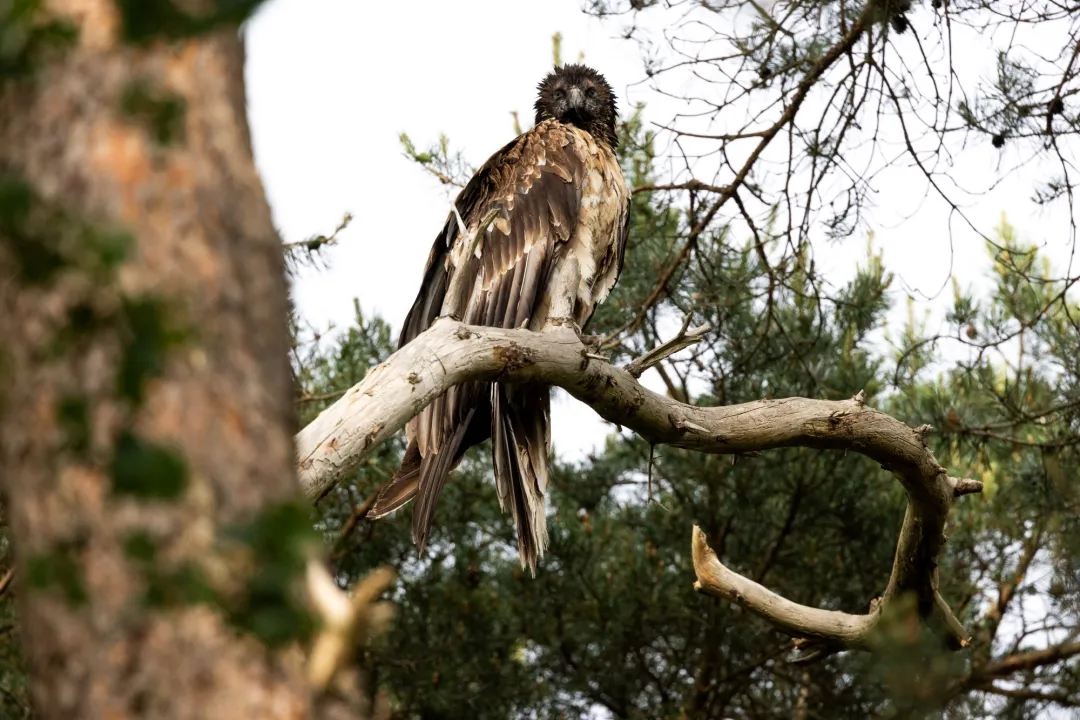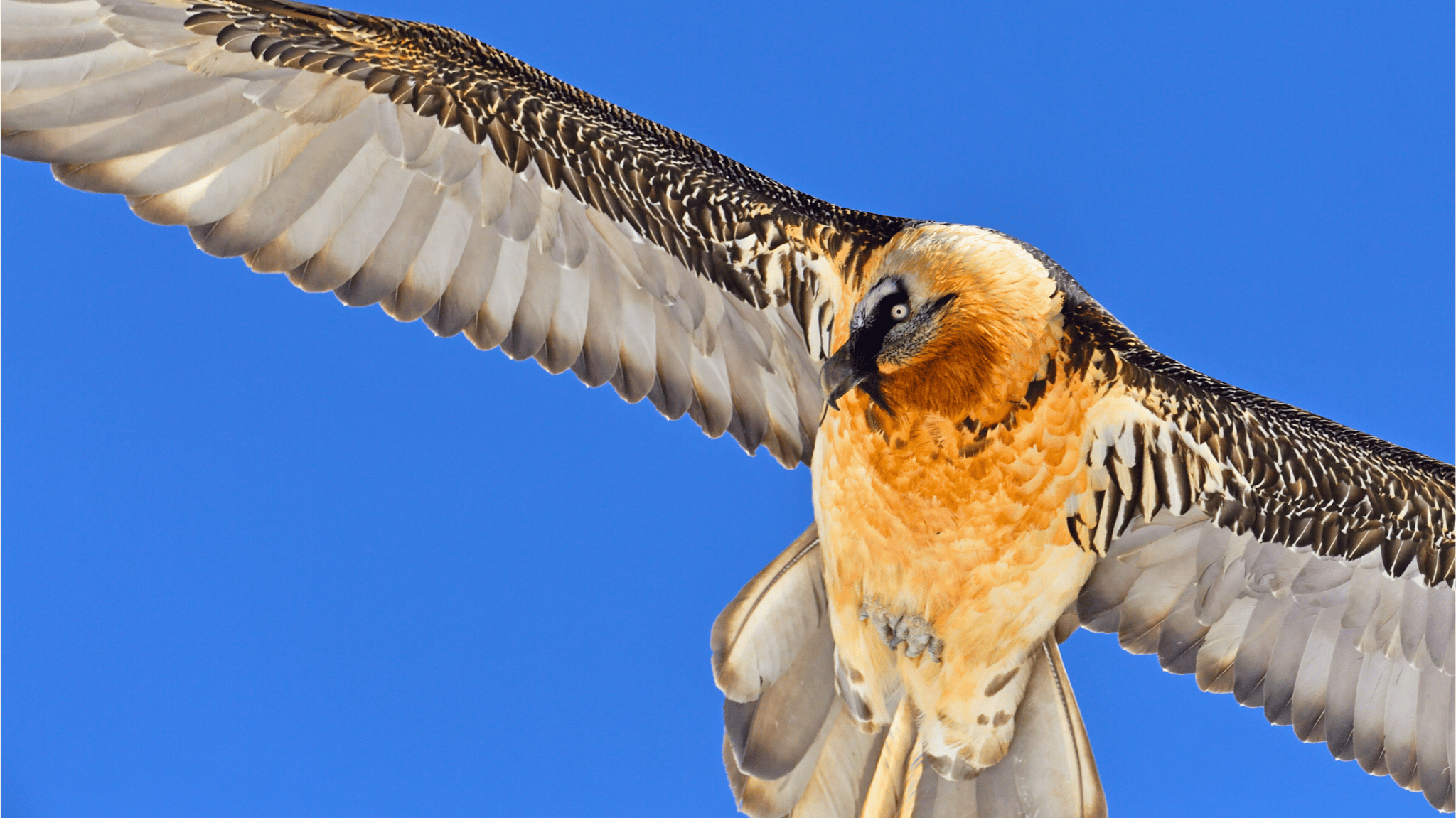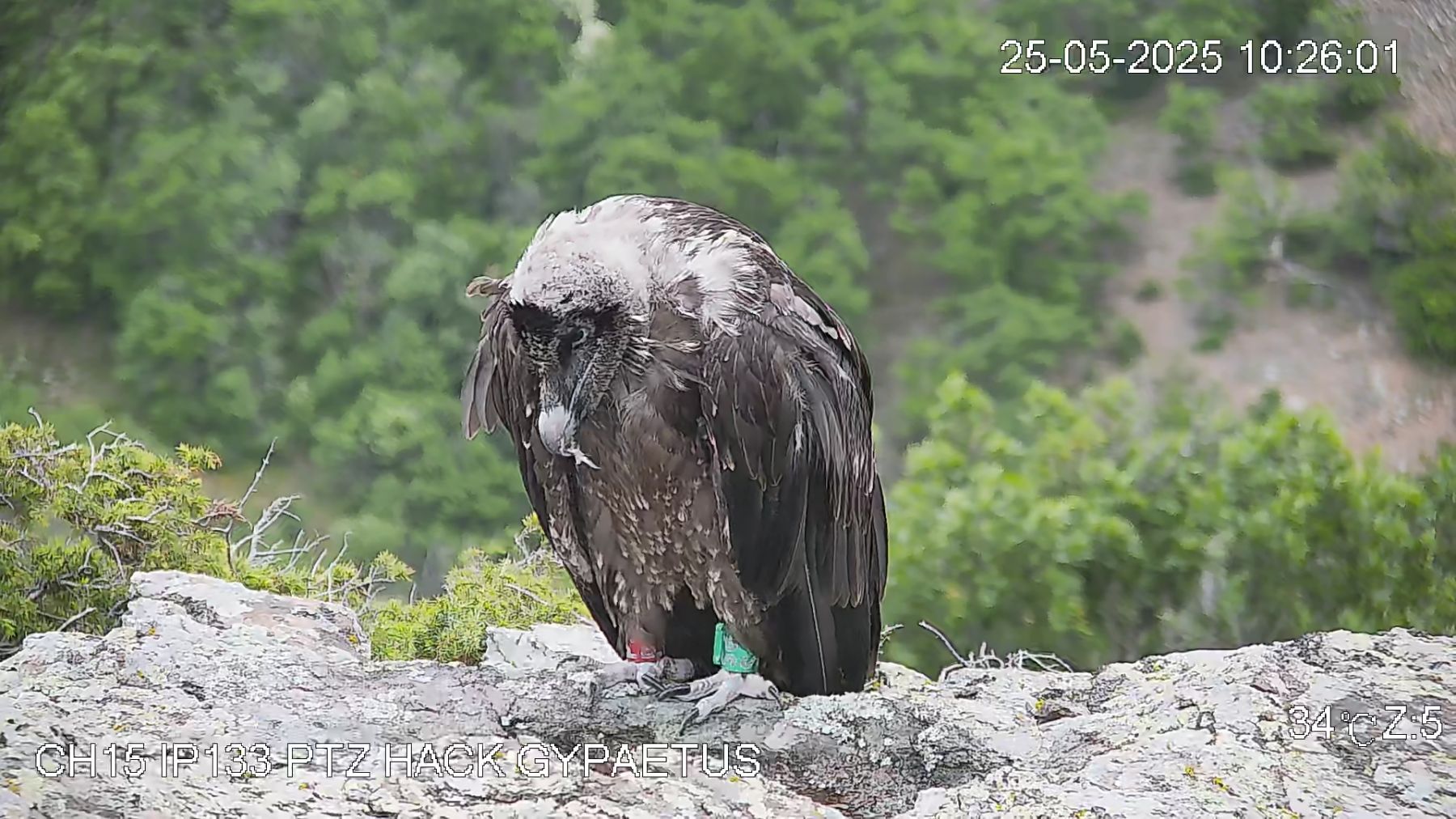
Last year, the Bearded Vulture captive breeding centre of Guadalentín welcomed ten chicks, achieving a worldwide record – the highest number of Bearded Vulture chicks hatched in a facility within a single breeding season. Now, the Centre has broken yet another record – an all-time high number of Bearded Vulture eggs laid in a single season.
The long and busy Bearded Vulture captive breeding season
Perhaps one of the most diligent and caring parents of the animal kingdom, Bearded Vultures perform several parental duties for many months to welcome and rear their offspring. Just like every year, at the end of September and early October, the mating season for the pairs begins. During this time, the staff provide the proper materials to the pairs and observe them around the clock, witnessing breeding pairs play with nesting materials such as sticks and wool, construct their nest, engage in mutual preening, exhibit aggression towards neighbouring pairs and start copulating. Egg-laying typically occurs three months after nest building and anywhere between 50 and 90 days after copulations. Once they lay the egg, the pair shares responsibilities and incubates the clutch for around 54 days, and the hatchling will usually be able to fledge at approximately four months of age. Human keepers have to keep an extra watchful eye over pairs during the breeding period since fights between members are more frequent. They also need to closely monitor their breeding behaviour to make sure everything goes smoothly and help boost chances of breeding success.
A new record of Bearded Vulture eggs
The mating season at the centre began at the end of September, and Josef and Keno laid the first egg on 8 December 2021. There are eight breeding pairs at the CCG this season: Elías and Viola, Lázaro and Nava, Josef and Keno, Andalucía and Salvia, Borosa and Toba, Tranco and Sabina, Montero and Nona (excitingly, they are breeding for the first time) and Cabús and Perea.
Until today, the eight breeding pairs laid 15 eggs. The latest egg marked the first clutch of the season for Cabús and Perea. Even though the male Cabús is already an old bird and is suffering from an injury due to his age, the possibility that the pair may lay a few more clutches is not ruled out. In any case, expectations have already been exceeded. Compared to last year, where the pairs laid 12 eggs with ten being fertile, the number of clutches laid this season opens up the possibility of surpassing the historic figure of ten chicks, but only time will tell.
Update
On Saturday, 5 February, Perea laid her second egg, bringing the total number of eggs produced in the centre this season to 16. This milestone makes it more feasible to surpass the ten chicks hatched last year.
Cabús and Perea are now incubating the last egg of this season in their nest, together with egg number 15, laid on 29 January. The father Cabús is almost 40-years-old and originated from the Pyrenees. After suffering an injury in the wild and undergoing treatment, he entered Guadalentín in 1997 to contribute to the captive breeding programme. Perea, Cabús’ second breeding partner, hatched in Schönbrunn Zoo (Austria) 13 years ago and arrived at Guadalentín in 2011. Last year, Perea produced her first chick, nicknamed ‘Guinness’, the tenth chick of 2021 and whose name reflects the world record.
The most important Bearded Vulture Captive Breeding Centre
In 1986, Bearded Vultures disappeared from the skies of Andalusia. One of the ways to bring the species back from extinction was the establishment of the Bearded Vulture captive breeding centre of Guadalentín in 1996, aiming to produce captive-bred chicks for release into the wild. Located in the Natural Park of Cazorla, this Andalusian centre has come a long way since its opening. The first specimen to hatch did so almost 20 years ago in February 2002, and until today, Guadalentín successfully produced a total of 102 chicks.
Guadalentín is presently the most important centre within the Bearded Vulture Captive Breeding Network, coordinated by us at the Vulture Conservation Foundation (VCF) on behalf of EAZA‘s EEP (Bearded Vulture EEP), which breeds the species in captivity for conservation purposes. This centre contributes the most chicks every year within the network, supporting reintroduction programmes in Andalusia but also in other regions across Spain, France and the Alps. It also specializes in double adoptions and takes young Bearded Vultures from other Bearded Vulture EEP partners to ensure natural rearing. As of 2020, the VCF also assumed management of the Centre following an agreement with the Junta de Andalucía.
We will keep you informed. To follow the news of the breeding season, follow #BeardedVultureBreedingSeason on Facebook, Twitter, Instagram and LinkedIn.









